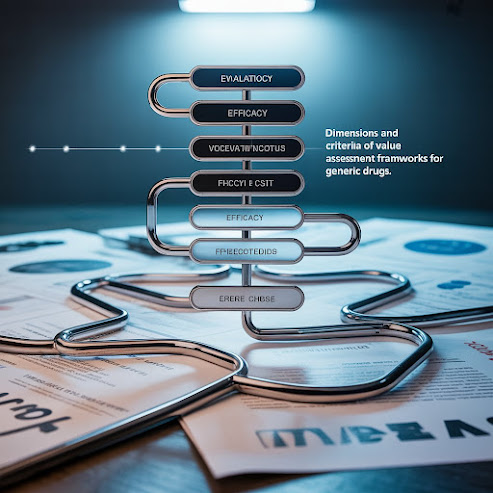Automated PCB Testing Using Robots | #DigitalTwin #VisualServoing #RoboticAutomation #PCBDiagnostics
A Novel Computer Vision-Based Method for PCB Repair Automation in Small-Batch Manufacturing
Diagnostics of printed circuit board assemblies (PCBAs) in repair and remanufacturing environments pose distinct challenges compared to high-volume production. Traditional diagnostic tools are optimized for uniformity and scale, but become impractical in settings with high product diversity, sparse documentation, and small batch sizes. This paper presents a novel robotic probe positioning method leveraging digital twins (DTs), computer vision, and constellation-based visual servoing to perform accurate and efficient measurements on diverse PCB assemblies. The system demonstrates high precision with minimal setup and achieves a 99.80% success rate in real industrial conditions, suggesting strong applicability for scalable diagnostics in flexible manufacturing and repair facilities.
Introduction
In the era of sustainable product lifecycles, extending the lifespan of electronic products through repair and remanufacturing is becoming both an economic and environmental priority. Printed circuit board diagnostics is a critical part of this process, especially during the post-production phase where failures are more varied and product variants often co-exist. However, existing diagnostic techniques, such as bed-of-nails and fixed probing setups, are ill-suited to environments characterized by diverse assemblies, physical wear, and lack of standardization.
Robotic automation holds potential in this domain but must overcome limitations in precision and adaptability. General-purpose robots, although flexible, struggle to handle the sub-millimeter accuracy required for electrical probing on PCB features like vias and solder joints. Furthermore, the presence of physical obstacles (e.g., casing, connectors, cables) further complicates automated access.
This paper introduces a hybrid approach that integrates visual servoing, digital twins, and path planning to guide robotic probe heads with high precision. By enhancing robot guidance with computer vision-based feedback loops and maintaining a lightweight digital twin model of the PCB and robot cell, the system adapts in real-time to physical variation and visual inconsistencies, making it practical for low-volume, high-mix PCB diagnostics.
Repair environments frequently receive PCBs from a variety of product lines, each with its own geometry, component layout, and condition. A typical diagnosis involves placing a measurement probe onto precise test points, often smaller than 1 mm, on populated PCBs still mounted in their enclosures. Challenges include:
-
High variation in PCB geometry and component placement
-
Lack of standard digital models or reference data
-
Manual probing being labor-intensive and error-prone
-
Difficulty achieving robotic accuracy without precise fixturing
Robots equipped with general vision systems cannot reliably identify and access all target points across such diverse instances. Fully digitizing each product variant is costly and unrealistic. A more feasible alternative is a low-detail digital twin supported by visual servoing to compensate for real-world variations.
Proposed Solution
The proposed system comprises:
-
Digital Twin (DT) Framework: A lightweight model of the robot cell, the PCB (approximate or 3D scanned), and the work environment is created to simulate and plan trajectories.
-
Visual Servoing Using Constellation Matching: A camera mounted near the end-effector identifies feature constellations (e.g., clusters of vias or solder joints), aligning probe positions with target features using point-to-line alignment.
-
Robot Motion Planning: A collision-free path is generated using the DT, which is refined by real-time visual feedback to reach sub-millimeter precision.
-
Cloud-Synced Diagnostic Profiles: Diagnostic tasks and target point constellations are digitized once and reused across geographically distributed repair stations.
This hybrid approach reduces the need for high-precision fixturing or complex digital modeling. Instead, visual servoing bridges the gap between digital planning and real-world execution, ensuring accurate contact even on variable PCBs.
Results
The system was deployed in an operational industrial environment with the following outcomes:
-
Success Rate: 99.80% in reaching diagnostic points without human intervention.
-
Average Positioning Error: Less than 0.15 mm on target features sized between 0.2–1 mm.
-
Deployment Time: Significant reduction in setup and calibration time compared to fully manual or fixture-based approaches.
-
Cost Efficiency: Avoids expensive fixtures and minimizes reliance on highly skilled labor.
Related Work
Traditional PCB diagnostics are dominated by:
-
Bed-of-Nails Testing: Fast but inflexible and expensive to set up for each variant.
-
Flying-Probe Systems: Adaptable but time-intensive, often requiring custom probe paths per variant.
-
Machine Vision Inspection: Typically used for surface defect detection, but insufficient for positioning contact probes.
This paper builds upon the flexibility of flying-probe systems while addressing their inefficiencies through digital twin modeling and servoing, offering a robust solution tailored for remanufacturing and repair.
Conclusion
A novel method combining visual servoing, digital twins, and robotic automation presents a viable solution for accurate, flexible PCB diagnostics in diverse, small-batch settings. The approach not only reduces reliance on costly fixtures and expert human labor but also enables rapid scalability across multiple sites. The system's real-world success demonstrates that a minimal digital model, when paired with real-time vision, is sufficient to enable industrial-grade precision in complex diagnostic tasks.
#DigitalTwin #VisualServoing #RoboticAutomation #PCBDiagnostics #ElectronicsRepair #SmartManufacturing #FlexibleManufacturing #Industry40 #ComputerVision #IndustrialRobotics




Comments
Post a Comment